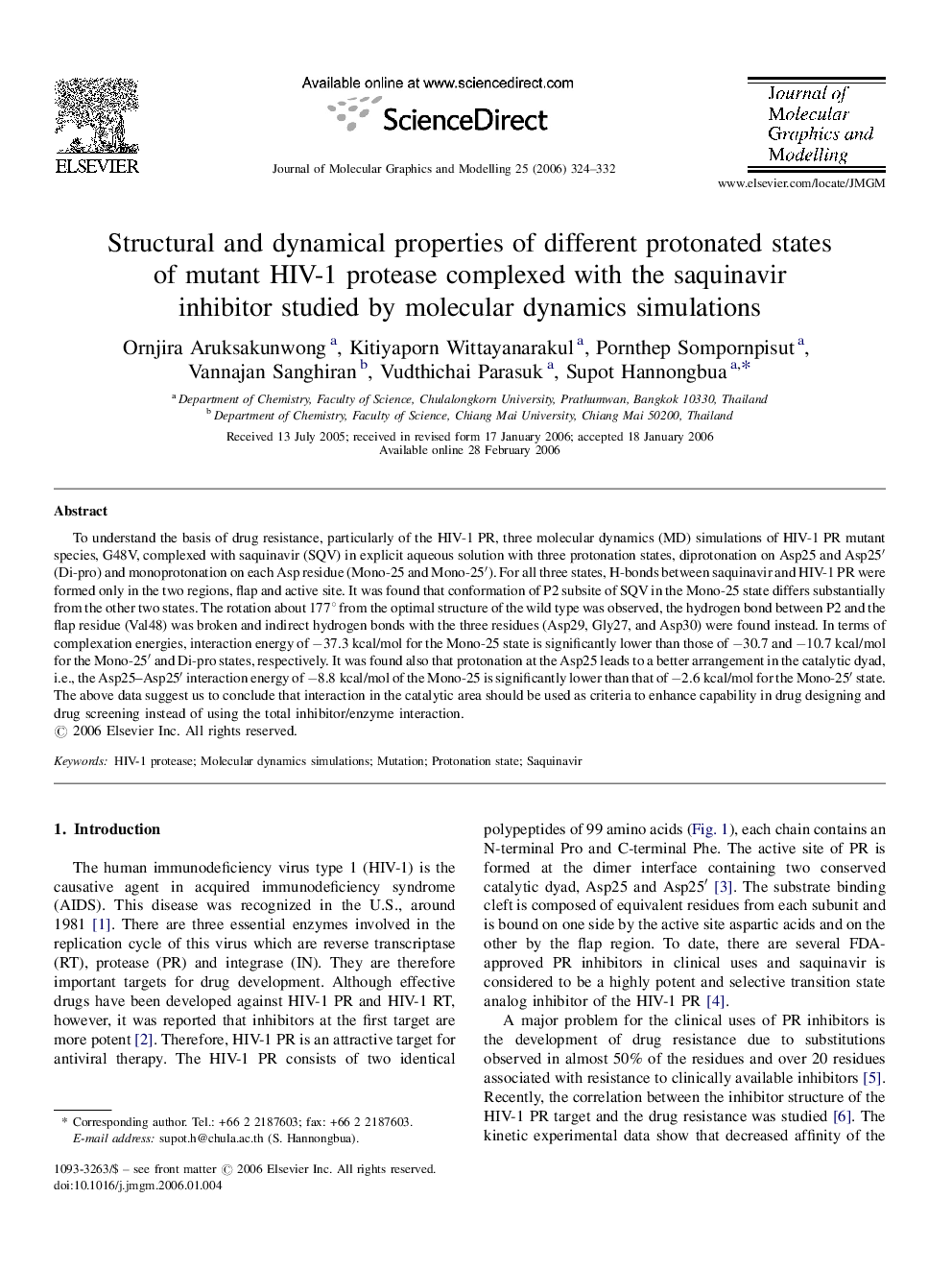| Article ID | Journal | Published Year | Pages | File Type |
|---|---|---|---|---|
| 443019 | Journal of Molecular Graphics and Modelling | 2006 | 9 Pages |
To understand the basis of drug resistance, particularly of the HIV-1 PR, three molecular dynamics (MD) simulations of HIV-1 PR mutant species, G48V, complexed with saquinavir (SQV) in explicit aqueous solution with three protonation states, diprotonation on Asp25 and Asp25′ (Di-pro) and monoprotonation on each Asp residue (Mono-25 and Mono-25′). For all three states, H-bonds between saquinavir and HIV-1 PR were formed only in the two regions, flap and active site. It was found that conformation of P2 subsite of SQV in the Mono-25 state differs substantially from the other two states. The rotation about 177° from the optimal structure of the wild type was observed, the hydrogen bond between P2 and the flap residue (Val48) was broken and indirect hydrogen bonds with the three residues (Asp29, Gly27, and Asp30) were found instead. In terms of complexation energies, interaction energy of −37.3 kcal/mol for the Mono-25 state is significantly lower than those of −30.7 and −10.7 kcal/mol for the Mono-25′ and Di-pro states, respectively. It was found also that protonation at the Asp25 leads to a better arrangement in the catalytic dyad, i.e., the Asp25–Asp25′ interaction energy of −8.8 kcal/mol of the Mono-25 is significantly lower than that of −2.6 kcal/mol for the Mono-25′ state. The above data suggest us to conclude that interaction in the catalytic area should be used as criteria to enhance capability in drug designing and drug screening instead of using the total inhibitor/enzyme interaction.
